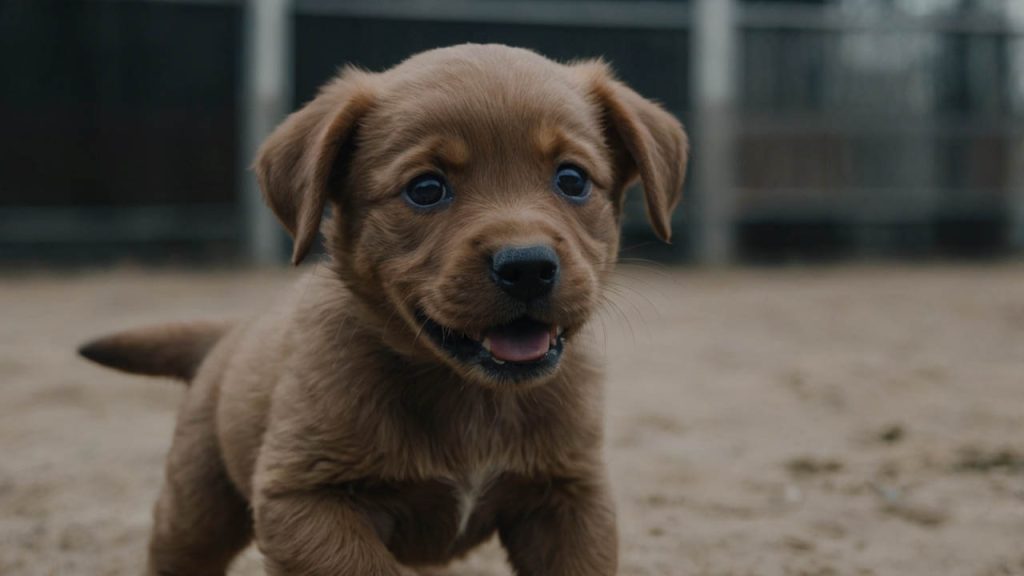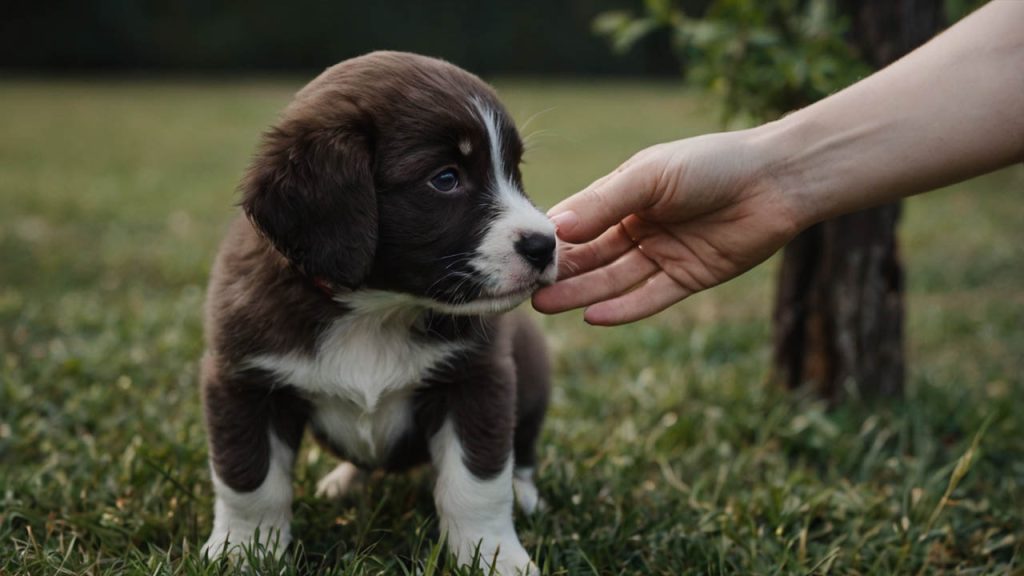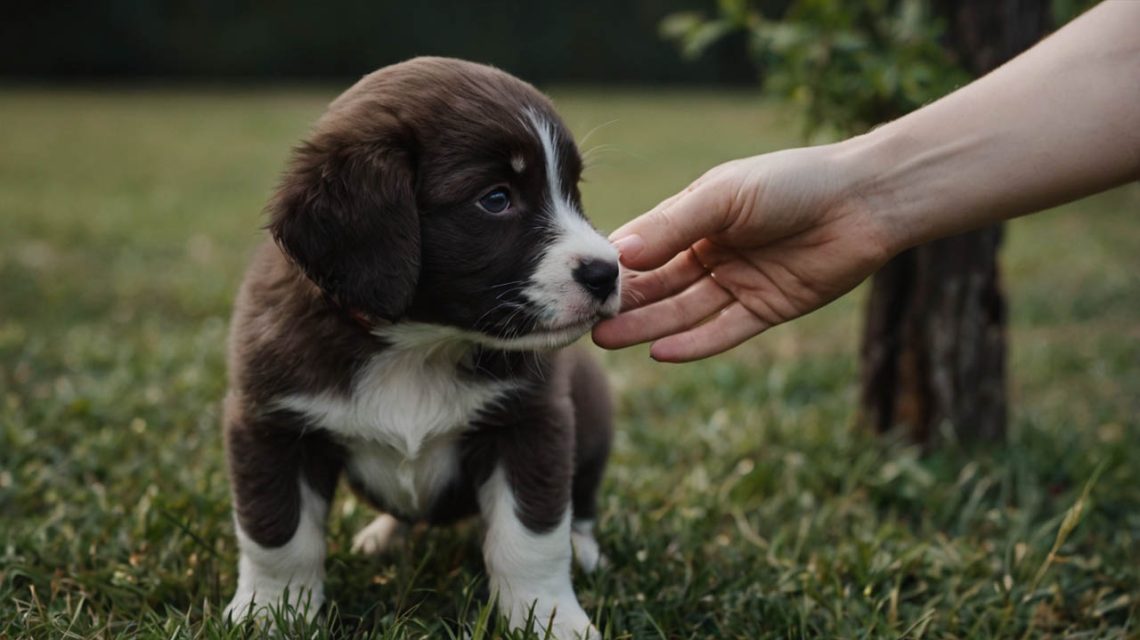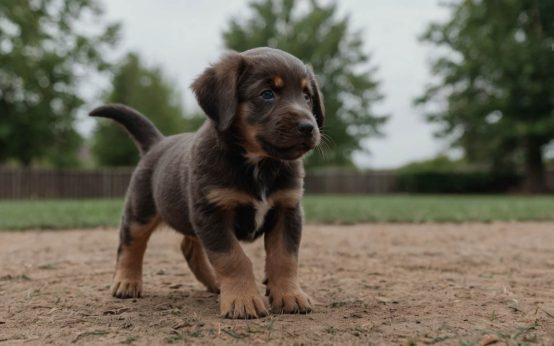How to Teach a Puppy to Shake: A Fun and Easy Step-by-Step Guide
There are few things more adorable than a puppy proudly offering their paw for a handshake. It’s a classic, charming trick that delights everyone who sees it. More importantly, it’s a fantastic training exercise that opens up a new line of communication between you and your new best friend. If you’re wondering how to teach a puppy to shake, you’ll be thrilled to know it’s one of the simplest and most rewarding tricks to train. Consequently, it’s a perfect starting point for building a foundation of fun, positive-reinforcement-based learning.
This comprehensive guide will provide a complete storyline for teaching this skill, breaking it down into tiny, puppy-sized steps. We will cover everything from the initial preparation to troubleshooting common puppy hurdles. Therefore, with just a few short, joyful sessions, you and your puppy will be shaking paws like seasoned professionals.
Why You Should Know How to Teach a Puppy to Shake
Beyond the undeniable cuteness factor, teaching your puppy tricks like “shake” has profound benefits for their development and your relationship. This is far more than just a party trick.
- Builds Puppy Confidence: Every time your puppy learns a new skill and earns praise, their confidence grows. For a young dog still learning about the world, these small victories are incredibly empowering.
- Provides Crucial Mental Stimulation: Puppies have boundless energy, and while physical exercise is vital, mental exercise is just as important. A five-minute training session can be just as tiring as a 20-minute walk and helps prevent boredom-related behaviors like destructive chewing.
- Strengthens Your Bond: Training is a team activity. The process of learning how to teach a puppy to shake strengthens communication, trust, and your partnership. It shows your puppy that interacting with you is fun and rewarding.
- Creates a Foundation for Husbandry and Other Tricks: A puppy who is comfortable offering their paw for a shake is more likely to be comfortable having their paws handled for nail trims or grooming. Furthermore, “shake” is the gateway to more advanced tricks like “high five” and “wave.”

Getting Started: The Foundation for How to Teach a Puppy to Shake
Setting the stage for a successful training session is the key to frustration-free learning. A little preparation ensures your puppy can focus, learn quickly, and, most importantly, have fun.
Gathering Your Essential Training Tools
You only need a few simple things to get started.
- High-Value Treats: This is the most critical element. For a puppy, you need something extra-special. Use tiny, soft, pea-sized treats that they can swallow quickly. Think small bits of boiled chicken, cheese, or high-quality commercial puppy training treats. Their regular kibble likely won’t be motivating enough.
- A Distraction-Free Environment: Choose a quiet room in your house where you won’t be interrupted. You want your puppy’s full attention.
The ‘Sit’ Command: A Non-Negotiable Prerequisite
Before you begin to teach a puppy to shake, they must have a reliable “sit.” Asking them to sit first puts them in a calm, stable, and focused position. A puppy who is standing or wiggling is far less likely to be able to lift a paw without losing their balance. If their “sit” isn’t solid yet, spend a few more sessions on that command first.
The Puppy Training Mindset: Short, Sweet, and Positive
Your puppy’s attention span is incredibly short.
- Keep Sessions to a Minimum: Aim for training sessions that are only 1-3 minutes long. You can do several of these short sessions throughout the day. This is far more effective than one long 15-minute session that will only lead to frustration.
- Always End Positively: Finish every session on a successful repetition, even if it’s an easy one. You want your puppy to leave the “classroom” feeling like a winner.
The Core Method: How to Teach a Puppy to Shake in 4 Easy Steps
This method is perfect for puppies because it captures a natural behavior and shapes it into a command. It is entirely positive and easy for them to understand.
Step 1: Get Your Puppy into the “Ready” Position
First, ask your puppy to “Sit.” Once they are sitting calmly in front of you, give them a small treat and a word of praise like “Good sit!”
Step 2: Capture the Natural Paw-Lifting Motion
This is the heart of the training process.
- Take one of your high-value treats and close your hand around it, making a fist.
- Hold your fist down near your puppy’s nose, but slightly off to one side (the side you want them to lift their paw from).
- Your puppy will naturally sniff and lick your hand. Be patient and wait. Eventually, out of curiosity or frustration, they will lift a paw to bat at your hand.
- The exact moment their paw makes contact with your hand, say an enthusiastic “Yes!” and immediately open your fist to give them the treat.
Repeat this 5-7 times. You are teaching your puppy a simple equation: Paw on Hand = Treat. This is the foundational secret to how to teach a puppy to shake.
Step 3: Introduce the Verbal Cue “Shake”
Once your puppy is reliably and quickly pawing your fist as soon as you present it, you’re ready to name the behavior.
- As you lower your fist toward them, say the word “Shake” in a clear and happy voice.
- When their paw touches your hand, mark it with “Yes!” and reward them.
You are now creating an association between the word “Shake” and the action of lifting their paw. After several repetitions, you can begin to present your hand open, in a classic handshake position, instead of a closed fist. The process remains the same.
Step 4: Fading the Treat Lure
The final goal is for your puppy to shake your empty hand.
- Say “Shake” and present your open, empty hand.
- When your puppy places their paw in your hand, mark the moment with “Yes!” and then give them a treat from your other hand.
This crucial step teaches them that the reward is for the action itself, not for what might be hiding in your hand. This completes the process of how to teach a puppy to shake.

Troubleshooting When You Teach a Puppy to Shake
Puppies are creative, and you might encounter a few common roadblocks. Here’s how to navigate them.
My Puppy Just Wriggles or Licks My Hand
If your puppy isn’t lifting their paw, you may need to offer a little more encouragement. Try gently tapping or tickling the back of their wrist area. This often triggers an automatic reflex to lift the paw, which you can instantly mark and reward. This is a fantastic tip when you are learning how to teach a puppy to shake.
My Puppy is Using Their Sharp Puppy Teeth!
If your puppy is mouthing or nipping your hand instead of using their paw, they are likely confused. Briefly pull your hand away with a neutral “Oops!” Then, represent your hand. Only reward paw contact. They will quickly learn that teeth on skin makes the fun stop, but paw on skin brings the reward.
My Puppy Paws with Too Much Force (and Puppy Nails!)
If their shake is more of a frantic scratch, you need to shape the behavior. Only reward the gentlest touches. If they paw you too hard, pull your hand away. If they offer a softer touch, give them a jackpot (multiple treats!). They will learn that a polite, gentle paw placement is the most rewarding option.
Conclusion: A Pawshake That Builds a Lifelong Bond
You’ve done it! You now have the complete, puppy-friendly blueprint for how to teach a puppy to shake. This simple, joyful trick is a powerful tool in your training toolbox. It’s a fun way to engage your puppy’s brain, build their confidence, and strengthen the incredible connection you are forming. By keeping your approach positive, patient, and fun, you’re teaching your puppy that learning with you is the best game in the world.
Now that they’ve mastered the shake, what’s next? A high five? Roll over? The training adventures are just beginning!
Did you try this method with your puppy? We’d love to hear about your progress! Share your stories and photos in the comments below.



 How to Teach a Puppy to Shake: Easy Training Guide
How to Teach a Puppy to Shake: Easy Training Guide